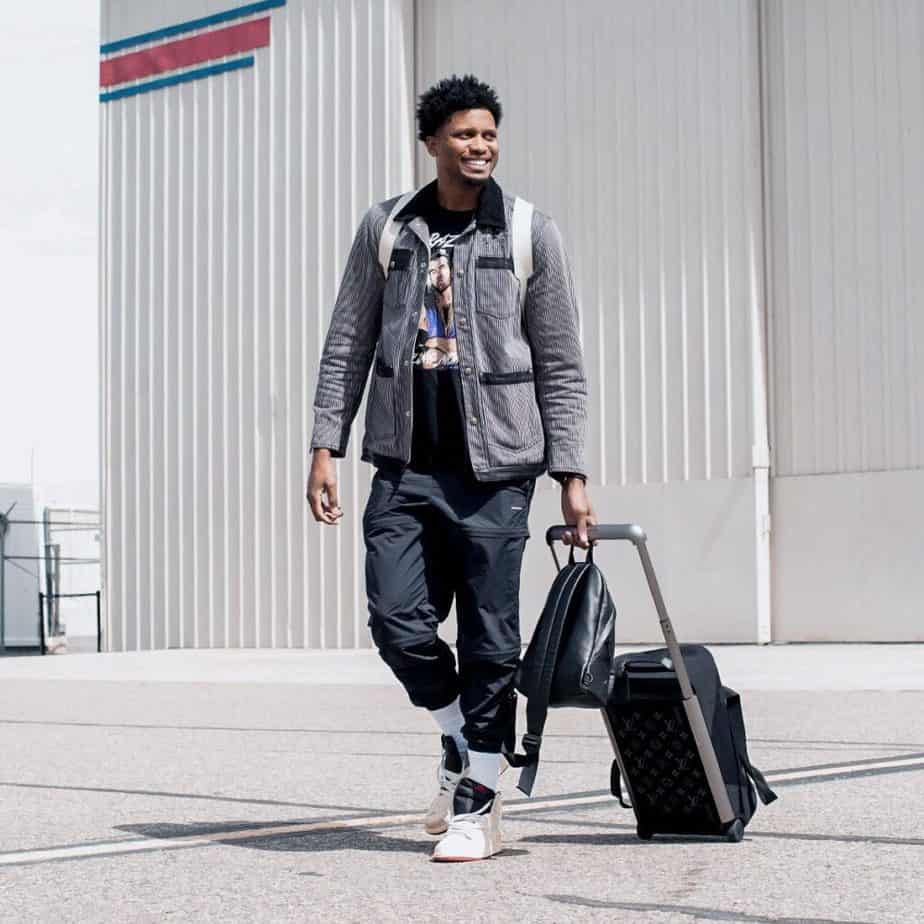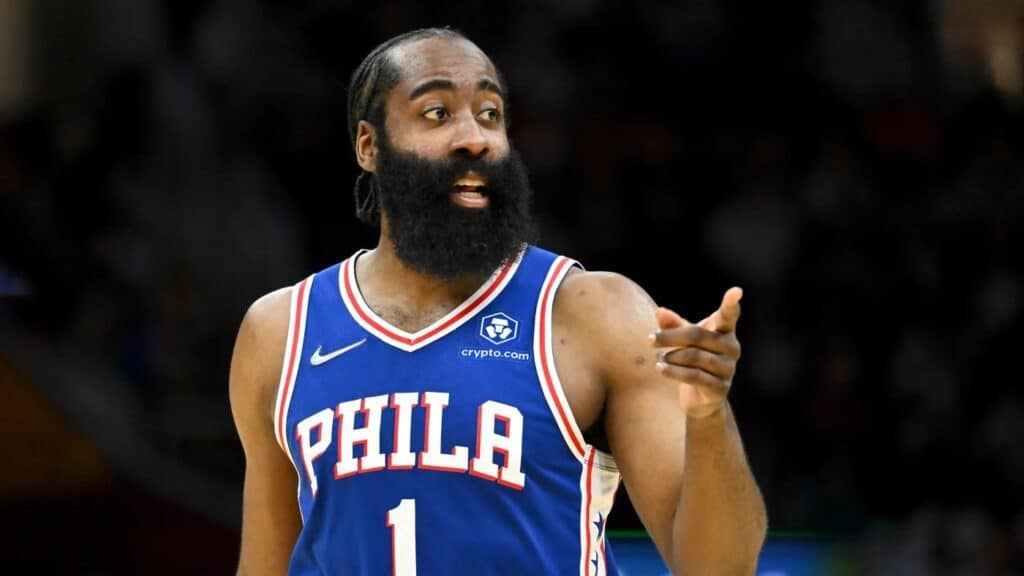NBA trades can be pretty complicated business, but they shake up the NBA world. There have been some huge trades over the last few years, but the details aren’t always public knowledge.
How do NBA trades work? Teams can make trades between the start of the regular season and the NBA trade deadline. A trade is finalized through a call with the league where the details of the trade are confirmed as well as any personal information about the players in question.

There are many rules that govern what teams, players and agents can and cannot do around trades. It can get complicated! Above is a very simple overview of what actually happens, for the detailed version keep reading.
The first major element of how NBA trades work is the trade deadline. The Trade deadline has been a part of the NBA since it first began, although the timing has changed over that time. The original trade deadline was January 1st, but the season looks very different to how it is now.
Since then, it has continued to be moved further and further back into the season. For the 2022 season, the trade deadline was the 10th of February. The actual calculation for when the trade deadline falls is on the seventeenth Thursday of the season. at exactly 3p.m. ET. This means that all trades have to be finalised prior to this time, with correct paperwork received by the league office, otherwise they can not be completed.
Each season, teams are allowed to trade players contracts, draft rights to a player or draft choices to another team. Cash can also be traded in the NBA, but there are specific limits on the amount of cash that can be traded. For example, in the 2019-20 season, teams could only pay out or receive a maximum of $5.617m million. Very different to the multi million pound world of European Soccer trades.
The details of any trades are usually worked out between the front offices of all teams involved. Trades will be instigated by the General Manager (GM) of a team who are either looking to get rid of or acquire an asset. They have no obligation to consult with players or coaching staff, although doing both is probably the sign of a competent GM.

They will work out trade details with the front office of the team or teams who are involved in the trade. Once they have worked out these details, there will be a call with league officials. During this call, all of the details about the trade will be confirmed.
During this call, teams must disclose all information about the assets involved in the trade. This includes not publicly known information as the teams have the responsibility to be completely open and honest during trading. There are some punishments for not being honest during trade talks and even the possibility a trade could be reversed.
If a team is found to have failed to disclose information, the league could easily rescind the trade. The NBA could also fine the team as well as taking away future draft picks. If NBA trades are not open and honest, it puts teams off the idea of trading. So the NBA needs to make sure that trades are honest and all information is disclosed.
One of the biggest factors teams must consider is the NBA Salary Cap. It has a massive impact on what trades can and can’t be done. While salary doesn’t have to match exactly, a team must always have a squad that falls within the salary limits set out by the salary cap. If a trade would take a team outside of these parameters it can’t happen.
Once all of these details are ironed out and as long as all parties are happy, the trade can be agreed and confirmed. This is usually when details will begin to come out, most likely in the form of a “Woj Bomb”.
What Happens When an NBA player is traded?
Once the trade has been agreed between both parties, the player will usually get a call from his agent. The agent of the team will usually be involved in the trade negotiations so they will help to decide details of the trade.
Once it is confirmed, the player will get a call from his agent or a member of his team’s staff. The player will be told about the details of trade and he will usually need to complete a physical examination. The trade will usually depend on the player passing the physical as the trade is made on the basis that the player is healthy.
Once the trade is confirmed and all details agreed. It means that players will then need to begin the difficult process of moving cities. It is a difficult thing to do for players as they have to move their families across the country at almost any random time. Getting traded is a very difficult thing to do, regardless of how many millions a week you make.
Who decides NBA trade rules
NBA trades have a specific set of rules that are outlines by the Collective Bargaining Agreement(CBA). This is a contract between the NBA and the National Basketball Players Association, which is the players union. This contract is hugely important to the NBA.
It decides the rules of player contracts, trades, revenue share and salary cap as well as many other crucial details to the NBA. It is an agreement that is crucial to the NBA. You can see exactly how it is important if you go back a decade.
At the end of the 2010-11 NBA season, the CBA expired. A new agreement could not be agreed and so therefore, NBA players refused to play. This led to the NBA lockout which caused the 2011-12 season to be reduced to just 66 games, compared to the 82 games that were going to be played.
There were big disagreements between the details of the CBA agreement between NBA players and officials. This was completely sorted out after a while and the following negotiations have been a lot smoother. The current CBA agreement runs through the 2023-24 season.
Do NBA Players have a say in trades?
Despite the influence of NBA players increasing in decisions, technically speaking there are not any specific clauses that say that players have a decision in trades. However, there are two examples of times when players do have influence in trades.
The first being no-trade clauses. There are a variety of players in the NBA who have no-trade clauses in their contracts. This means that they cannot be traded unless they consent to waiving this clause. For the 2021-22 season, players like Blake Griffin, Victor Oladipo and Bobby Portis.
There are some specific rules as to who can earn a trade exemption and it is why many superstars do not currently have no-trade clauses in their contracts. Under the current CBA agreement, there are two types of players who can have no-trade clauses in their contracts.
The first being any players with eight years or more of service and the second being players who have played 4 or more years with the team that has agreed to the no-trade clause.
Superstar players have taken a very different approach. With sponsor money increasing, players are much happier to sit out parts of the season if they don’t want to play for a team. It means that at the moment, superstar players are deciding where they want to be traded to.

I am sure that James Harden got to choose exactly where he went. Many other stars will get to choose where they go, with superstar players surely choosing where to play. Part of this is also down to players deciding trades they are not involved in.
There have been a lot of rumours about players like Lebron James and Kevin Durant deciding on trades for their team. Neither player have been open about this as they don’t want to seem like they’re undermining the teams GM. But it makes sense that you would want the best players around your superstars.
What are some of the biggest trades in NBA history
Looking back across history, there have been some monumental trades in NBA history that have completely changed the landscape of the league.
The Milwaukee Bucks trading away Kareem Abdul-Jabbar has to be one of the biggest of all time. All the way back in 1975, Jabbar was already one of the best players in the NBA. He had helped the Bucks to a championship in 1971 as well as being NBA MVP in 1971, 1972 and 1974.
Despite all of this success, the Bucks only had one title and decided to move on from Kareem. They traded him to the Lakers for four players and cash. There is no doubt that the Lakers got the better side of that deal, winning five title with Los Angeles and becoming the greatest scorer in NBA history.
The Charlotte Hornets have made some pretty poor decisions in the team’s history, but in 1996 they surely made their worst ever choice. It started off looking pretty smart as the Hornets drafted Kobe Bryant at the age of 17 with the 13th pick. But, they traded the fairly unknown high school player away very quickly to the LA Lakers. The Lakers sent back Allstar Centre, Vlade Divac as they wanted to clear up some salary cap room (for Shaq) and of course the rookie contract of Bryant was very cheap. Of course,
Bryant went on to become a Lakers legend, winning five titles with the franchise and becoming one of their greatest ever players. I’m sure it is a trade that the Hornets massively regret with the gift of hindsight.
Michael Jordan’s second three peat may never have happened if it was not for a trade. Dennis Rodman being traded to the Chicago Bulls in 1995 was crucial for the teams second three peat in the 1990s. The Bulls became a contender once again with Jordan returning and became NBA champions once again in Rodman’s first season with the team.
Summary
It’s important to remember when reviewing a trade, that it’s not always about the players involved. A team may be trying to dump salary from its books for the coming or future years, maybe giving up playing assets that are disproportionate in terms of on court performance, in order to do this. The Lakers are about to face a Westbrook situation, could they include draft picks as compensation for someone taking on his salary and giving them some on court playing assets back? The key to understanding a trade is knowing whether a team is trying to rebuild its roster, develop young talent or win a title. (if they’re doing anything else they’re doing it wrong)
NBA trades are crucial to the leagues format and their details may seem very complicated. But when you dig into it a little more, NBA trades usually make a lot of sense.
